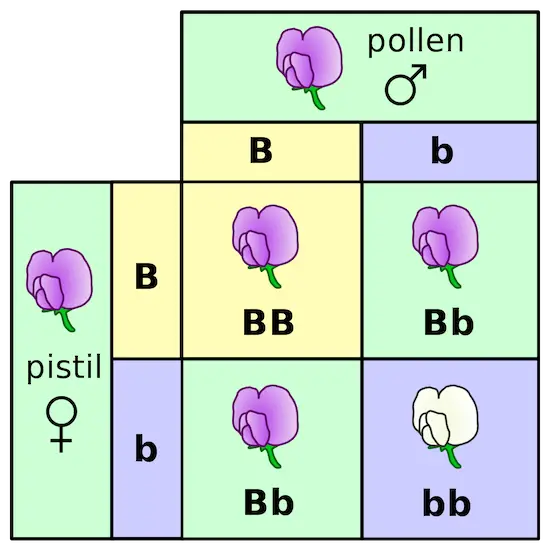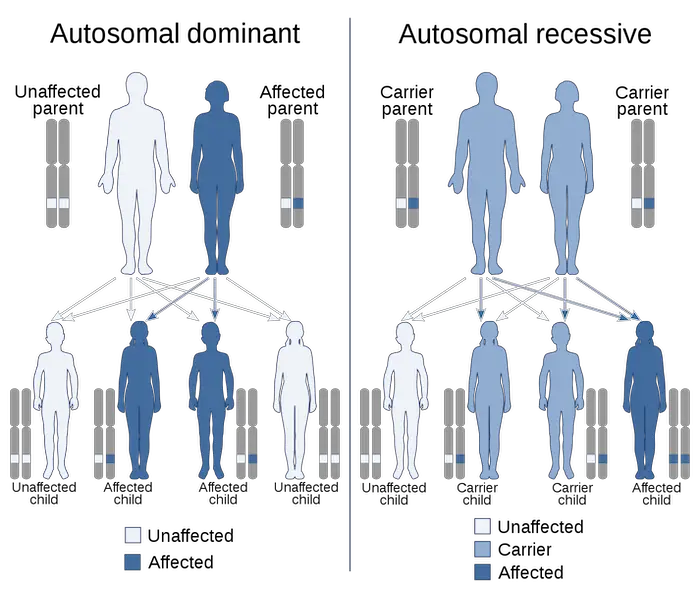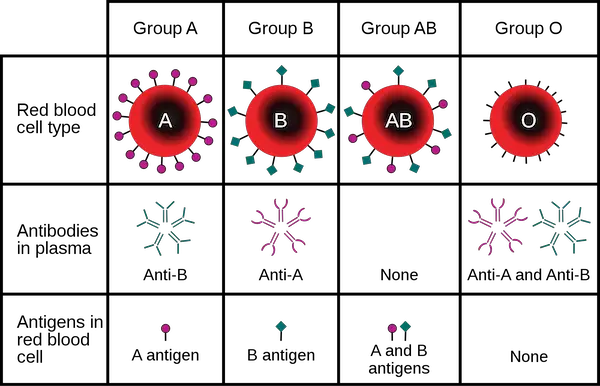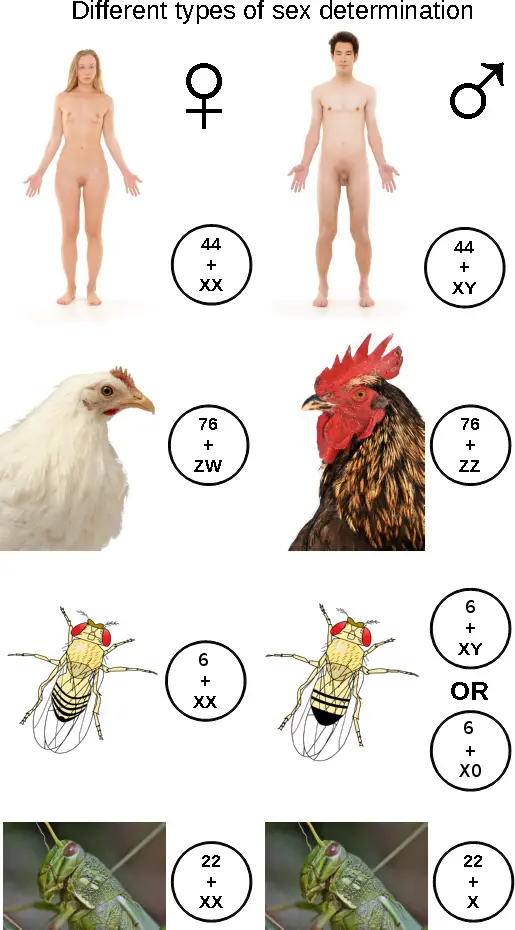Genetics

“My scientific studies have afforded me great gratification, and I am convinced that it will not be long before the whole world acknowledges the results of my work.” – Gregor Mendel
People often remark how we look more like one of our parents or both, and even our grandparents or forebears. This especially holds true with us Filipinos who share close relationships with our relatives outside our core, nuclear family.
Inquiry on why traits are passed has started long ago with most favoring the explanation given by the “blending” hypothesis, that is males and females contribute ingredients for heredity that mix in the offspring. Kind of like how mixing two primary colors would result in a secondary color. However, this hypothesis was ultimately rejected as it did not explain why some traits disappear in one generation only to reappear in another.
Click below to go to the main reviewers:
Table of Contents
- It All Started with A Pea: Gregor Mendel and Genetics
- Genetic Disorders
- Non-Mendelian Patterns: Variations on Mendel’s Law
- Chromosomes and Inheritance
- Sex Chromosomes and Sex-Linked Genes
- References
- Download Article in PDF Format
- Test Yourself!
It All Started with A Pea: Gregor Mendel and Genetics
Heredity is the transmission of traits from one generation to the next. The study of heredity, and genetics, started when the monk Gregor Mendel deduced the basic principles of genetics while studying garden peas.
In 1866, Mendel published his work arguing that “heritable factors” are passed from parent to offspring. These factors which we now refer to as genes retain their uniqueness generation after generation. Imagine genes as cards, a deck can be shuffled randomly, but the cards will always be identifiable from each other. Similarly, genes may be sorted, but each gene retains its identity.

A heritable feature that varies among individuals is called a character. Each variation of a character is called a trait. For example, a flower’s color is its character while the colors that appear on the flower are its trait.
Because Mendel’s experiments are rigorous, he was able to formulate many hypotheses about inheritance. Mendel’s experiments with pea plants allowed him to formulate four hypotheses. Using modern terminologies, they are as follows:
- There are alternative versions of genes that account for variations in inherited characters. These alternative versions of a gene are called alleles.
- For each character, an organism inherits two alleles of a gene, one from each parent. An organism with two identical alleles of the same gene is homozygous while those with two different alleles are heterozygous.
- If the two alleles of an inherited trait differ, one allele determines the organism’s appearance while the other has no noticeable effect on the appearance. The allele that determines the appearance is called the dominant allele while the other is referred to as the recessive allele. Geneticists or scientists who study heredity represent dominant alleles as uppercase italic letters and recessive alleles as lowercase italic letters.
- A sperm or an egg carries only one allele for each character because allele pairs separate during the production of gametes. The process where the pairs separate is referred to as the law of segregation.

The image above shows a Punnett square, a means to quantify the probability that an organism will inherit a specific trait. Because appearance does not always reveal the composition of genes, geneticists define an organism’s observable traits as phenotype and its genetic makeup as genotype.
In his study, Gregor Mendel was able to see a pattern of inheritance of seven pea plant characters. The underlying mechanism for this pattern is stated in Mendel’s law of segregation: “Pairs of alleles segregate during gamete formation only to reform as pairs during fertilization.”
In addition to the law of segregation, Gregor Mendel also established the law of independent assortment by tracking two characters at once. That is, a pair of alleles will not encroach on other pairs of alleles during gamete formation. Put another way, how one character is inherited will have no effect on how other characters are inherited.
Because Mendel has a strong background in mathematics, he appreciated the statistical nature of inheritance. Two statistical principles that are also present in genetics are the rule of multiplication, which is used to describe independent events (like determining the chance that two coins will appear with the same side up); and the rule of addition, which can help determine if an event will occur in two or more ways (like in determining the chance that a certain suit of card will be picked and added to your deck). These two rules when applied to segregation and independent assortment can help solve some rather complex genetic problems.
Genetic Disorders

Combinations of certain alleles are not always beneficial. Genetic disorders may affect an individual’s appearance because of these combinations. Disorders that show Mendel’s inheritance patterns can be classified as recessive disorders or dominant disorders.
When recessive traits cause a disorder to appear in an individual, it is an example of a recessive disorder. Most people with recessive disorders are born to normal, heterozygous parents, called carriers – as they have the allele for the disorder but do not affect their phenotypes.
Dominant alleles may also cause a number of human disorders. An example would be the presence of extra toes and fingers (polydactyly). Dominant alleles that cause lethal diseases are much less common than recessive alleles that cause lethal diseases.
The following table shows some of these kinds of genetic disorders:
1. Recessive Disorders
| Disorder | Major Symptoms |
| Albinism | Lack of pigments in the skin, hair, and eyes |
| Cystic Fibrosis | Excess mucus in the lungs, digestive tract, and liver; increased susceptibility to infections |
| Sickle-cell Disease | Sickle-shaped red blood cells; damage in many tissues |
| Tay-Sachs Disease | Lipids accumulate in brain cells; mental deficiency; blindness |
2. Dominant Disorders
| Disorder | Major Symptoms |
| Achondroplasia | Dwarfism |
| Huntington’s Disease | Uncontrollable movements; cognitive impairments |
| Hypercholesterolemia | Excess cholesterol in the blood; heart disease |
Thankfully, recent developments in medicine such as genetic testing and fetal testing, imaging, and newborn screening methods help us reduce the debilitating effects of some of these disorders. Ethical considerations must still be kept in place as these methods continue to improve and with it, a whole new set of ethical dilemmas to think through.
Non-Mendelian Patterns: Variations on Mendel’s Law
Mendel’s two laws explain inheritance as discrete factors according to simple rules of probability. These laws are valid for all sexually reproducing organisms, but just as the basic rule of harmony could not explain the rich sounds of a symphony, Mendel’s laws could not explain some patterns of genetic inheritance. More often, the observed patterns are more complex.
In Mendel’s study on pea plants, the traits that manifested wherein the first generation of offspring appears exactly like one of the two parents, or when the phenotype is expressed regardless if the allele is present in one or two copies, is called complete dominance.
But in some first-generation (geneticists designate generations as Fn, where n is the number of generations after the original parents; for example, first-generation individuals will be designated as F1) offspring, the phenotype falls between those of the two parents. This situation is called incomplete dominance. Imagine that a white and red flower is bred and one of its offspring has pink flowers.
So far, we have discussed inheritance in only two alleles per gene. But in most organisms, genes can be found in more than two versions known as multiple alleles. An example of this would be our own ABO blood type.
The next image shows the different blood types. In people with blood types A and B, the alleles code for the presence of either antigen A or B, the last allele neither codes for the two hence blood type as a character is based on three alleles. This is called codominance as these two alleles can be expressed in heterozygous individuals who will have blood type AB.
Care should be done to distinguish codominance from incomplete dominance as the former refers to the expression of two alleles in separate, distinct ways; while the latter is the expression of one intermediate trait.

Genes are not specific to only one character. It can also affect multiple characters called pleiotropy. Because of this, many characters can be observed as a continuum (visualize the color palette used on house and décor magazines or those showing skin tones). Such features, like our skin color and height, vary among the population due to polygenic inheritance.
The environment also affects the characters. For humans, nutrition can affect height or our build while tanning darkens the skin. But whether humans are more influenced by genes or the environment (nature or nurture) is a hotly debated topic. What is important is that individual features for any organism arise because of the combination of genetic and environmental factors.
Chromosomes and Inheritance
Mendel published his results in 1866, but it was only later, after mitosis and meiosis became better understood, that researchers noticed parallels between the behavior of chromosomes and Mendel’s “heritable factors.” By combining these two ideas, one of biology’s most important concepts was formulated: the chromosome theory of inheritance.
This theory states that genes are located on specific loci/positions on chromosomes, and these chromosomes are the ones that undergo segregation and independent assortment during meiosis which accounts for inheritance patterns.
As biologists and research increased our understanding of heredity, certain genes were observed to not follow Mendelian laws. It was observed that genes close to each other on the same chromosome tend to be inherited together. These genes are called linked genes and thus, may not follow Mendel’s law of independent assortment. This was found to be because of crossing-over in meiosis which produces new combinations of alleles. Thus, the discovery of how crossing over helps diversify gametes confirmed the relationship between chromosomes and heredity.

Among the studies which supported this relationship was that of Hunt Morgan on the fruit fly, Drosophila melanogaster. He introduced to us the concepts of wild-type, traits that are most common in nature, and mutants, less common traits. By mating wild-type fruit flies with mutants, he was able to observe offspring with varying combinations of characters from the parents.
Sex Chromosomes and Sex-Linked Genes
Many animals have a pair of sex chromosomes that determine an individual’s sex. As a review, males have XY pair of sex chromosomes, and females have two pairs of X chromosomes. In humans, an offspring’s sex is determined by whether a sperm contains an X or Y chromosome.
The X-Y system is only one of several sex-determining systems. Grasshoppers and other insects, for example, have an X-O system where O stands for the absence of a sex chromosome. Females are XX and males have one sex chromosome, hence XO. As in humans, the sperm determines the sex of the individual since it produces two classes of sperm: one that may bear an X or another that lacks it.
In contrast, the Z-W system is delegated to organisms where sex is determined by the egg. In certain fishes, butterflies, and birds, for example, males have the ZZ genotype while females have ZW.

Aside from determining sex, these chromosomes contain characters unrelated to determining the sexuality of an organism. These are called sex-linked genes as they are genes located on either sex chromosome.
In humans, the vast majority of sex-linked genes are X-linked genes. In terms of sex-linked genetic disorders, most of them are X-linked recessive conditions that affect males more often. This is because a man only inherits one X chromosome and for women to exhibit these disorders, they need to have two alleles to exhibit the trait.
Examples of these disorders are hemophilia, characterized by excessive bleeding due to an abnormality in blood clotting proteins, and Duchenne muscular dystrophy, characterized by progressive weakening of muscles and lack of coordination due to a mutation of a gene that is located on the X chromosome which codes for muscle proteins.
Who knew that from simple observations of pea plants, we would arrive at a better understanding of how traits are endowed and passed on? As we continue to explore more of life and its properties, we are getting better at understanding its complexity, but in turn, we are also delving into grey areas where we must tread carefully lest we undermine the knowledge we have gained and use it for the worse.
Let me conclude this article by sharing a quote from a researcher of Agent Orange, an herbicide used in warfare during the Vietnam War, with the prospect that in the future, we as a species will only gain more understanding of heredity and in turn will also have more tools that would test our ethics and morality:
“Nothing that you do in science is guaranteed to result in benefits for mankind. Any discovery, I believe, is morally neutral and it can be turned either into constructive ends or destructive ends. That’s not the fault of science.” -Arthur W. Galston
References
Alberts, B., Johnson, A., Lewis, J., Raff, M. C., Roberts, K., Walter, P., … Hunt, T. (2008). Molecular Biology of The Cell. New York: Garland Science.
Campbell, N. A., Cain, M. L., Minorsky, P. V., Reece, J. B., Urry, L. A., & Wasserman, S. A. (2018). Biology: A global approach. Harlow, Essex, England: Pearson Education Limited.
Fowler, S., Roush, R., & Wise, J. (2013). Concepts of Biology. Houston, Texas: OpenStax. Available at https://openstax.org/books/concepts-biology/pages/1-introduction.
Pearce, J. (2008). Arthur Galston, Agent Orange Researcher, Is Dead at 88. In: New York Times. Available at https://www.nytimes.com/2008/06/23/us/23galston.html.
Hine, R. (2019). A Dictionary of Biology. Oxford, US: Oxford University Press.
Hillis, D. M., Moritz, C., & Mable, B. K. (1996). Molecular systematics. Sunderland, Mass: Sinauer.
Karp, G., Iwasa, J., & Marshall, W. (2018). Cell biology. Hoboken, NJ: John Wiley.
Klug, W. S. (2020). Concepts of genetics. New York, NY: Pearson.
Mendel, G., & Mangelsdorf, P. C. (1967). Experiments in plant hybridisation: Gregor Mendel. Cambridge: Harvard University Press.
Pierce, B. A. (2020). Genetics: A conceptual approach. New York: W.H. Freeman/Macmillan Learning.
Reece, J. B., & Campbell, N. A. (2011). Campbell Biology. Boston: Benjamin Cummings/Pearson.
Taylor, M. R., Simon, E. J., Dickey, J., Hogan, K. A., & Reece, J. B. (2018). Campbell Biology: Concepts & connections. NY: Pearson.
Next topic: Animals (Forms and Functions)
Previous topic: Theory of Evolution
Return to the main article: The Ultimate Biology Reviewer
Download Article in PDF Format
Test Yourself!
1. Practice Questions [PDF Download]
2. Answer Key [PDF Download]
Written by Earl Jeroh Bacabac
in College Entrance Exam, LET, NMAT, Reviewers, UPCAT
Earl Jeroh Bacabac
Earl’s love for the sea fueled his goal to become a marine biologist. He obtained his Bachelor’s Degree in Biology from the University of the Philippines Visayas while also being a DOST scholar. His passion for the marine environment is rivaled by his diverse interests in music, the arts, and video games.
Copyright Notice
All materials contained on this site are protected by the Republic of the Philippines copyright law and may not be reproduced, distributed, transmitted, displayed, published, or broadcast without the prior written permission of filipiknow.net or in the case of third party materials, the owner of that content. You may not alter or remove any trademark, copyright, or other notice from copies of the content. Be warned that we have already reported and helped terminate several websites and YouTube channels for blatantly stealing our content. If you wish to use filipiknow.net content for commercial purposes, such as for content syndication, etc., please contact us at legal(at)filipiknow(dot)net
